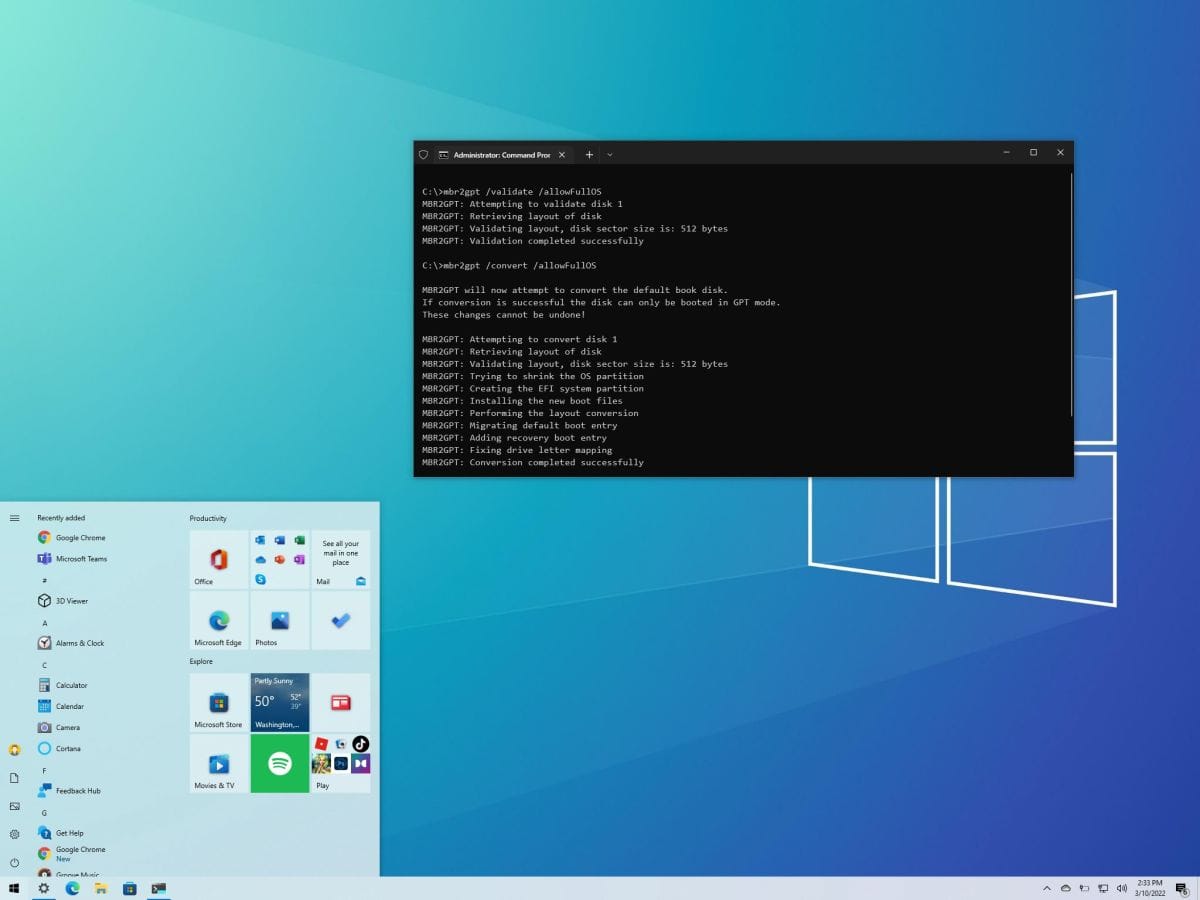All, I had an issue not passing the secure boot Win 11 upgrade test. The bios would not recognize my M.2 flash drive as the UEFI boot, and I would have to force the computer to boot up my M.2 in a menu. After much consternation and research, I fixed it. I updated the mobo bios a few days ago and that fixed the TPM 2.0 issue I had before but that didn't fix the secure boot issue.
So after looking at all the NVME driver pages, and many other rabbit holes, I fixed my computer in about 20 minutes. The problem with the flash drive M.2 boot partition is that it was an MBR, not GPT. It has to be GPT. So here is how you fix it. I had to go through the restart troubleshoot recovery menu to get to the command prompt that I needed. It wouldn't let me do it from Windows.

 www.windowscentral.com
www.windowscentral.com
So after looking at all the NVME driver pages, and many other rabbit holes, I fixed my computer in about 20 minutes. The problem with the flash drive M.2 boot partition is that it was an MBR, not GPT. It has to be GPT. So here is how you fix it. I had to go through the restart troubleshoot recovery menu to get to the command prompt that I needed. It wouldn't let me do it from Windows.

How to convert MBR to GPT drive to switch BIOS to UEFI on Windows 10
A PC with UEFI is more secure and faster than the legacy one using BIOS, and here's how to switch.
 www.windowscentral.com
www.windowscentral.com
My Computer
System One
-
- OS
- WINDOWS 10
- Computer type
- PC/Desktop
- Manufacturer/Model
- Self built
- CPU
- AMD Ryzen 2600X 3.6 GHz 6 Core
- Motherboard
- Asus Rog Strix B450-F
- Memory
- Corsair Vengeance LPX 32 GB
- Graphics Card(s)
- Gigabyte GeForce RTX 2060 6 GB AORUS Extreme
- Monitor(s) Displays
- 3 Acer XZ321QU 31.5" Curved WQHD
- Screen Resolution
- 2560x1440 each , can combine to one large desktop
- Hard Drives
- Samsung EVO 970
- Case
- Same case for 25 years

















